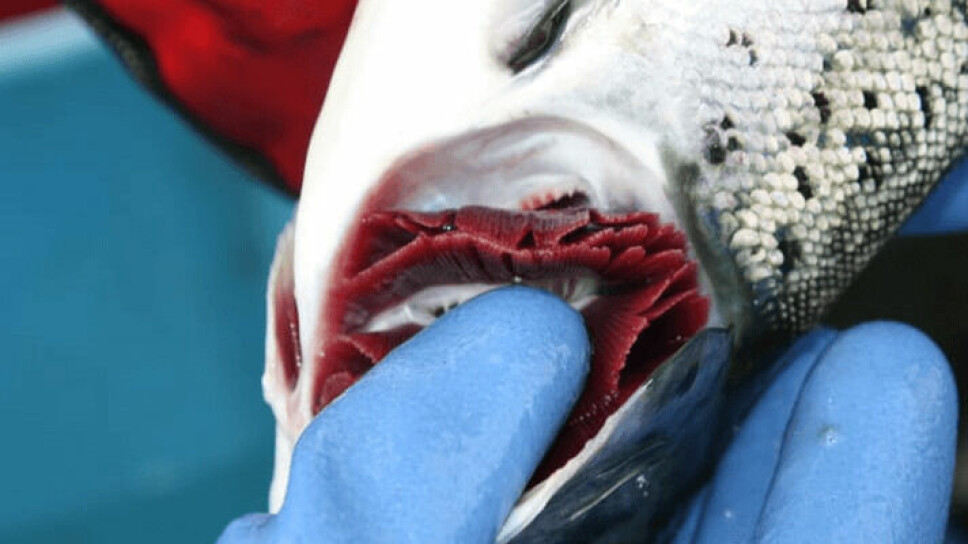
Micro jellyfish blooms take heavy toll on Scottish salmon
Hydrozoans were a principal cause of record monthly mortality in September
Blooms of micro jellyfish have been blamed for the deaths of a significant number of farmed salmon in Scotland. Figures published today show that 2.8 million salmon died in September, making it the worst month for fish mortalities since farmers began publishing mortality statistics in January 2018.
The mortalities amounted to 4.6% of the salmon being farmed in Scotland in September.
Academic researchers and salmon and trout farmers have standardised procedures on how to collect and process water samples and share water quality data to tackle the problem, which may be linked to increasing sea temperatures caused by climate change.
No clear trend
Regin Jacobsen, chief executive of Faroese company Bakkafrost, yesterday highlighted micro jellyfish, or hydrozoans, as a cause of large losses for the company’s Scottish operations in the third quarter of this year.
Answering a question about the issue at the presentation of Bakkafrost’s third-quarter results, he said: “There are some areas that have not been impacted, but they were impacted two years ago, so it’s not a clear trend where you can say there are some areas that are clearly out of this.
“It seems like these algae, these blooms, are coming in different areas, and when you look at the whole industry, it is more or less all over.”
Mortality figures published by trade body Salmon Scotland today show heavy losses at some sites as a direct result of jellyfish / plankton. Although the jellyfish can be as small as 2 mm, they can sting or block the gills of fish, causing death or exacerbating other problems.
Stings and cuts caused by micro jellyfish and sharp plankton (flagellates) also contribute to amoebic gill disease (AGD), another cause of die-offs.
Orkney to the Hebrides
Salmon Scotland’s figures show that the micro jellyfish blooms are not restricted to a specific area. In September, Cooke Aquaculture had 4.3% mortality at its Lyrawa Bay farm, Orkney, due to jellyfish / plankton and gill health related issues, and Loch Duart lost 55.9% of the stock at its Loch Carnan farm off the north coast of South Uist in the Western Isles.
Mowi Scotland lost 23.9% of the fish at its site off Muck and 25.2% at Rum, both in the Inner Hebrides, due to jellyfish / plankton. A further 21.7% of fish at Marulaig Bay off South Uist, 13.9% at Hellisay, Barra, and 9.7% at Loch Harport, Skye, died from the same cause.
Wester Ross Fisheries, now owned by Mowi, lost 7.6%, 8.6%, and 4.7% of stock at its Ardessie A, Ardessie B, and Ardmair farms respectively due to jellyfish / plankton, and 10.7% of the fish at Organic Sea Harvest’s Invertote farm off the northeast coast of Skye perished for the same reason.
Scottish Sea Farms did not have any deaths directly caused by jellyfish / plankton in September but suffered losses of 12.8%, 21.6% and 27% at its Nevis A, B, and C sites on Loch Nevis due in part to gill health challenges.
Cross-sector project
A cross-sector project commissioned by the Scottish Farmed Fish Health Framework (FFHF), which aims is to respond to new and developing challenges, is looking at how fish farmers can get warnings about micro jellyfish blooms, which can go unnoticed until fish show signs of distress.
Researchers at the Scottish Association for Marine Science (SAMS), Marine Scotland Science (MSS) and Scotland’s Rural College (SRUC) and the country’s trout and salmon producers hope standardising and sharing water quality data will be a key first step towards earlier detection of marine organisms that can affect fish health.
Actions that farmers can take if warned in advance include:
- Drawing fish deeper down and away from the water's surface where many of the harmful organisms can thrive
- Boosting oxygen levels in pens
- Transferring fish elsewhere including, where appropriate, altering the harvest schedule.
Emerging threats
Tavish Scott, chief executive of trade body Salmon Scotland, said: “Whether on land or sea, raising animals outdoors inevitably comes with risks as the climate continues to change and evolve, but that makes environment-induced events such as micro jellyfish no less devastating to the farmers caring for those animals day in, day out.
“It’s why we’re so committed to increasing our understanding of new and emerging threats in order to better safeguard the health and welfare of our salmon.”
Professor Keith Davidson, associate director for science and education at SAMS, said: “SAMS has operated an early warning system to mitigate the impacts of harmful algal blooms on shellfish. Now, we’re working with the Sustainable Aquaculture Innovation Centre (SAIC) and the sector to refine this approach to support salmon aquaculture.
“We use phytoplankton cell counts undertaken at farms to initiate mathematical models that are able to simulate the development and transport of these potentially harmful events and help farmers plan husbandry actions to best protect the health of farmed fish.”





















































